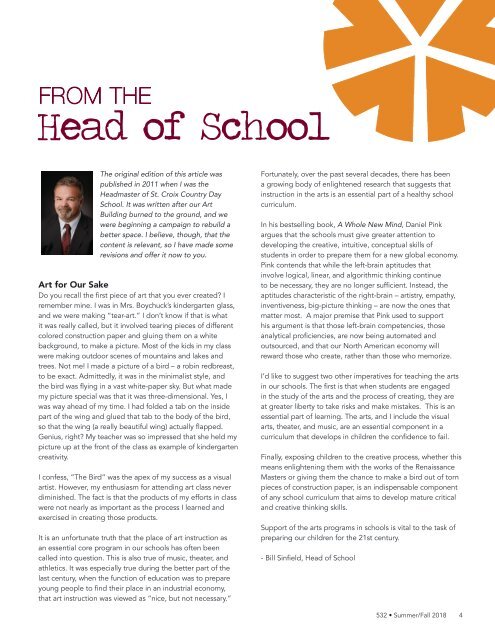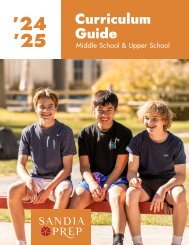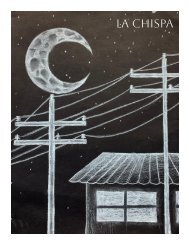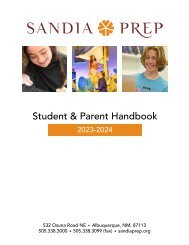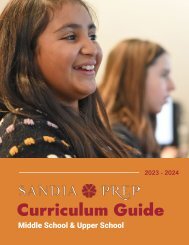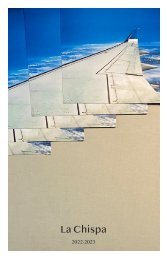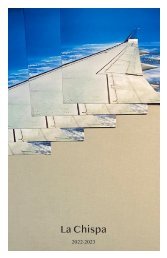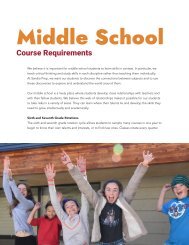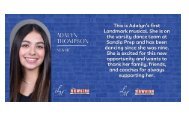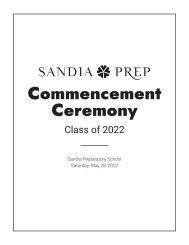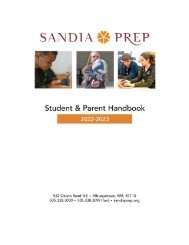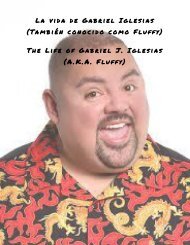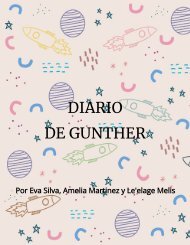Sandia Prep - 532 Magazine - Summer/Fall 2018
Sandia Prep's "532 Osuna Road" Magazine - Summer/Fall Issue
Sandia Prep's "532 Osuna Road" Magazine - Summer/Fall Issue
You also want an ePaper? Increase the reach of your titles
YUMPU automatically turns print PDFs into web optimized ePapers that Google loves.
FROM THE<br />
Head of School<br />
The original edition of this article was<br />
published in 2011 when I was the<br />
Headmaster of St. Croix Country Day<br />
School. It was written after our Art<br />
Building burned to the ground, and we<br />
were beginning a campaign to rebuild a<br />
better space. I believe, though, that the<br />
content is relevant, so I have made some<br />
revisions and offer it now to you.<br />
Art for Our Sake<br />
Do you recall the first piece of art that you ever created? I<br />
remember mine. I was in Mrs. Boychuck’s kindergarten glass,<br />
and we were making “tear-art.” I don’t know if that is what<br />
it was really called, but it involved tearing pieces of different<br />
colored construction paper and gluing them on a white<br />
background, to make a picture. Most of the kids in my class<br />
were making outdoor scenes of mountains and lakes and<br />
trees. Not me! I made a picture of a bird – a robin redbreast,<br />
to be exact. Admittedly, it was in the minimalist style, and<br />
the bird was flying in a vast white-paper sky. But what made<br />
my picture special was that it was three-dimensional. Yes, I<br />
was way ahead of my time. I had folded a tab on the inside<br />
part of the wing and glued that tab to the body of the bird,<br />
so that the wing (a really beautiful wing) actually flapped.<br />
Genius, right? My teacher was so impressed that she held my<br />
picture up at the front of the class as example of kindergarten<br />
creativity.<br />
I confess, “The Bird” was the apex of my success as a visual<br />
artist. However, my enthusiasm for attending art class never<br />
diminished. The fact is that the products of my efforts in class<br />
were not nearly as important as the process I learned and<br />
exercised in creating those products.<br />
It is an unfortunate truth that the place of art instruction as<br />
an essential core program in our schools has often been<br />
called into question. This is also true of music, theater, and<br />
athletics. It was especially true during the better part of the<br />
last century, when the function of education was to prepare<br />
young people to find their place in an industrial economy,<br />
that art instruction was viewed as “nice, but not necessary.”<br />
Fortunately, over the past several decades, there has been<br />
a growing body of enlightened research that suggests that<br />
instruction in the arts is an essential part of a healthy school<br />
curriculum.<br />
In his bestselling book, A Whole New Mind, Daniel Pink<br />
argues that the schools must give greater attention to<br />
developing the creative, intuitive, conceptual skills of<br />
students in order to prepare them for a new global economy.<br />
Pink contends that while the left-brain aptitudes that<br />
involve logical, linear, and algorithmic thinking continue<br />
to be necessary, they are no longer sufficient. Instead, the<br />
aptitudes characteristic of the right-brain – artistry, empathy,<br />
inventiveness, big-picture thinking – are now the ones that<br />
matter most. A major premise that Pink used to support<br />
his argument is that those left-brain competencies, those<br />
analytical proficiencies, are now being automated and<br />
outsourced, and that our North American economy will<br />
reward those who create, rather than those who memorize.<br />
I’d like to suggest two other imperatives for teaching the arts<br />
in our schools. The first is that when students are engaged<br />
in the study of the arts and the process of creating, they are<br />
at greater liberty to take risks and make mistakes. This is an<br />
essential part of learning. The arts, and I include the visual<br />
arts, theater, and music, are an essential component in a<br />
curriculum that develops in children the confidence to fail.<br />
Finally, exposing children to the creative process, whether this<br />
means enlightening them with the works of the Renaissance<br />
Masters or giving them the chance to make a bird out of torn<br />
pieces of construction paper, is an indispensable component<br />
of any school curriculum that aims to develop mature critical<br />
and creative thinking skills.<br />
Support of the arts programs in schools is vital to the task of<br />
preparing our children for the 21st century.<br />
- Bill Sinfield, Head of School<br />
<strong>532</strong> • <strong>Summer</strong>/<strong>Fall</strong> <strong>2018</strong> 4


